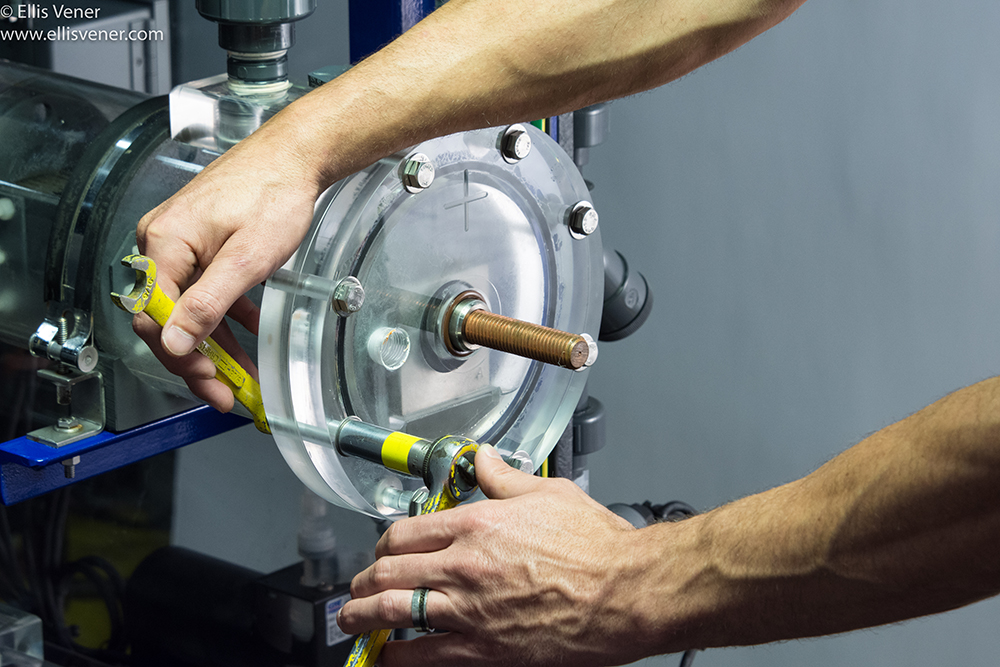Using on-site sodium hypochlorite generation technology to make oxidant for water and wastewater treatment is cost-effective, safe, and environmentally responsible. But, as with any piece of equipment, choosing the right one and caring for it properly impacts both life cycle costs and effectiveness. We talked with David McWalters, Field Service Manager-Americas, De Nora, to learn more.
When specifying an on-site sodium hypochlorite generator (OSHG), what kinds of considerations can impact asset life/maintenance?
System sizing is probably the most critical factor. If the system is undersized, it could be running 24/7, putting more wear and tear than the system is designed for. Knowing the sizing details from the earliest stage makes a big difference in a successful maintenance program.
Another consideration is the quality of the water. Using water that meets the system specification for hardness and other minerals will allow for the longest life of the system. Most OSHG manufacturers can provide ancillary equipment to resolve most problems with constituents in the water, knowing it up front is important. It’s very important to follow recommended maintenance on ancillary equipment, too. For example, an effective water softener will extend the life of an OSHG, but a faulty one can allow build-up on the cells and actually reduce the life of the system.
Like water, choosing a higher quality salt can also extend the life of the OSHG system. In the way that using a cheap oil in your car will affect the life of the engine, using inferior salt will affect the life of your electrolytic cell, the heart of the OSHG. When salt has a high calcium content, it builds up on cells and requires more cleaning. Some OSHG systems require food grade salt and others do not.
The environment also impacts the initial OSHG system design. Some considerations include the exposure to sun, heat, humidity, and potential for corrosion, particularly related to the electronics of an OSHG. Cells should not be exposed to direct sunlight so part of the design for an outdoor OSHG will include a covering. These variables should all be addressed at the time of specification.



